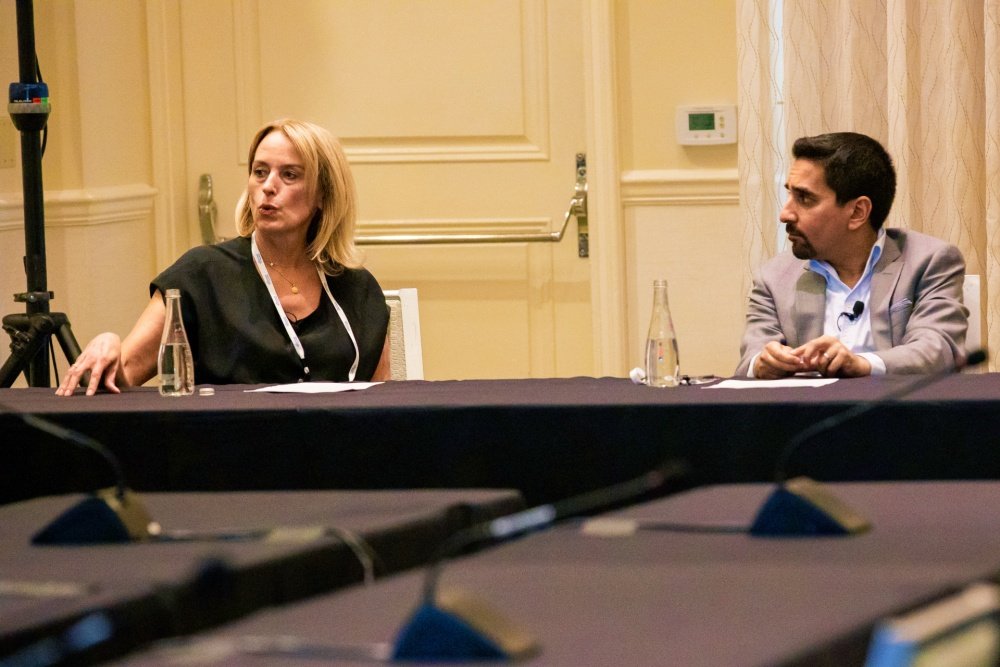RCM White Papers
The business of healthcare is changing, and you need a partner that takes your business forward. Find insights and perspectives on the latest trends in healthcare revenue cycle management:
A quiet, unobtrusive battle is playing out in healthcare across the country over Clinical Documentation Integrity (CDI); one that rarely makes headlines, yet shapes everything from hospital margins to patient trust. Behind the scenes, up to 80 percent of patient records hold gaps or ambiguities, each one a potential threat to quality scores, reimbursement, and regulatory compliance (National Library of Medicine, 2024).
The US healthcare industry is making a definite shift towards value-based care, where the quality of healthcare delivered to patients and the results achieved take center stage, marking a clear departure from the traditional fee-for-servicess approach.
The US healthcare industry is making a definite shift towards value-based care, where the quality of healthcare delivered to patients and the results achieved take center stage, marking a clear departure from the traditional fee-for-servicess approach.
The US healthcare industry utilizes Prior Authorization as a means of ensuring optimal and cost-effective use of medical services in accordance with the insurance coverage of each patient. As a rule, healthcare providers must reach out to and obtain approval from the respective insurance companies before they can deliver certain medical treatments or services to their patients.
Hospitals seeking to optimize their revenue cycle and improve their financial performance must start with a foundation of meaningful KPIs. Benchmarking and strategic metrics for each KPI are crucial aspects of implementing an effective transformation.
The brass-tack discussion at the Health Evolution Summit 2023, a gathering of industry leaders, recently delved into the topic of financial transformation in healthcare.
A typical healthcare provider in the United States is reliant on payors, such as insurance companies, to pay the medical bills of the patients who seek their care. Based on the services they deliver, they make their claims to the payor in prescribed format, requesting reimbursement in accordance with the coverage linked to the patient.
Clinical documentation improvement sounds like a silver bullet for effective revenue cycle management - an easy and straightforward solution for all RCM woes of healthcare providers - but it demands executive willpower, systemic transformation (in many cases) and most importantly, the cooperation of physicians, nurses, coders, and other healthcare personnel.
Providers may come across varying degrees of medical necessity denials on their reimbursement claims, based on the payers and the plans they work with.
Healthcare providers in the United States are now grappling with denial rates of up to 40% of their total reimbursements, according to American Medical Association.
The first step towards effective Revenue Cycle Management (RCM) is to identify the core metrics to be focused on, the actions to be taken to optimize them individually, and ultimately the specific goals you seek to achieve on each section of the cycle.
Patient access services can improve the patient experience by providing clear information, streamlining registration and scheduling processes, and using technology to enhance communication and engagement. By addressing financial concerns and meeting the needs of diverse patient populations, patient satisfaction can be improved.
An ineffective charge capture program leads to revenue leakage and delays cash realization. While most organizations focus well on back-office functions such as A/R and denial management, they fail to give due attention to the effectiveness of the charge capture process. Missed charges and inaccuracies in charge capture are the primary causes of ineffective charge capture.
A global pandemic forced rapid shifts in an institution that already had been a focal point of calls for change: health care. The panelists brought out perspectives on the impact of COVID-19, emerging technologies in healthcare, hospital finances, shift to value-based care, rise of wearable devices and interoperability.
Coming on the heels of the pandemic, an estimated 5 million US Workers have switched to new careers during the great resignation. The healthcare sector is one of the most affected, with the COVID-19 pandemic taking a toll on the frontline workers, i.e., physicians, nurses, and support personnel.
The post-pandemic path to recovery for hospitals and healthcare systems is steep with multiple challenges, including a severe shortage of clinical and revenue cycle labor, and unprecedented inflation. Initiatives such as value-based care, patient experience improvement, and process automation, on the other hand, are screaming for investments.
Increasing claim write-offs and decreasing success in denial appeals amplify the already sad state of the financials of hospitals and healthcare systems caused by the current labor shortage and trend of declining reimbursements. Shouldn't hospitals be focusing on denial prevention rather than denial recovery? Here are six tips to help you get ahead in the denials game and recover more revenue.
As hospital and health system CFOs prepare for the post-pandemic world, they are witnessing an unprecedented labor crisis and a spiraling backlog of A/R volumes that will bring down the entire organization. Cost pressures, shifts in payer mix, rising consumerism, and declining reimbursements add to their woes. Patient visits have been unpredictable in the post-pandemic world.
By outsourcing RCM processes, healthcare CFOs can unlock cash through cost savings and improved reimbursements. The improved effectiveness enables them to find the money to invest in technology and processes to deliver better patient care.
Declining reimbursements, rising consumerism, demand for improved patient experience, transition to value-based care, COVID-19's impact, manpower shortage and other factors distract healthcare providers from their core goal of delivering quality healthcare to their patients. They must respond with innovative approaches that could depend largely on finding the right outsourcing partner for the scalability and domain expertise the business needs.
Outsourcing is often associated with the idea of letting go. And letting go is about uncertainty and anxiety about results. By choosing the right partner, you can free up the time and find the investments for the strategic initiatives to propel your organization forward. In our experience, outsourcing can help you in three critical areas - Scalability, Automation, and transparency
Let us take a deeper look at the trends and factors that will shape the revenue cycle business in 2022, and years after.
From scheduling patient appointments to denial resolution, each step in the revenue cycle must ensure data integrity to avoid claim denials and rework. This whitepaper looks at some of the strategies you can adopt to create value from your revenue cycle.
Let us take a deeper look at the factors that will shape the revenue cycle business in 2022, and years after.
As with Neo, Revenue cycle leaders have a choice between the Red Pill The blue pill keeps you stuck in the enslaving ignorance of the status quo. Remaining in the same place and doing nothing significantly different is likely to not take you a great distance far. The red pill sets you free, allowing you to generate innovative ways to change the current landscape and move your revenue cycle to the next level. We provide you with some strategies on how we can help you navigate the challenges of RCM transformation.
The healthcare provider industry faces an unprecedented revenue cycle staffing shortage due to a combination of current issues, i.e., COVID-recovery to vaccination mandates to a real staffing shortage. It is time for revenue cycle leaders to look at these headwinds as an opportunity to create the revenue cycle of the future.
Revenue cycle leaders in hospitals and healthcare systems are facing multiple headwinds and trying to battle an ever-widening talent gap. They must make prudent choices as they strive to do more with less. Outsourcing and automation are two critical strategies that can help them bridge the talent gap. What's more, the unrelenting focus of the outsourcing services providers on managing the business processes by the numbers can improve reimbursements as well. Access Healthcare's best practice delivery engine provides the people, processes, and technology to help you do more with your revenue cycle.
Technology and analytics are key enablers of revenue cycle transformation. It’s time for revenue cycle organizations to shift to data-driven decision-making and process automation.
You are considering making significant investments in revenue cycle process automation. However, almost 75% of the Bots fail when underlying processes change. Future-proof Robotic process automation requires careful engineering of the automation solutions. Micro-bots and Micro-services, the key elements of Access Healthcare's enterprise automation platform, echo, ensure that your automation solution is future-proof and helps you get impressive returns from your automation investments.






























As AI, automation, and data intelligence converge, the days of incremental change are over. Our latest white paper reveals how visionary leaders are harnessing smart technology to drive financial performance, streamline operations, and put patient care back at the center. Unpack real-world insights, key challenges, and a practical roadmap for adopting the right AI strategies—no matter your size or setting. Is your healthcare organization ready?